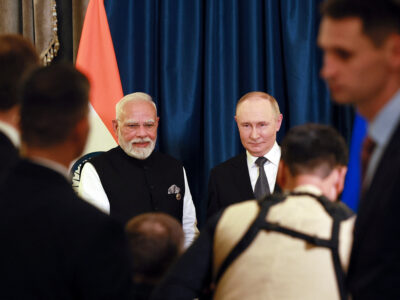Trump’s Ukraine Gamble
Is that all there was? Did months of boastful promises to end the war in Ukraine really produce little more than an Oval Office tongue-lashing of Volodymyr Zelensky, a day of ceremonious summitry with Vladimir Putin in Alaska, and a several hours of cringe-inducing European obsequiousness toward President Trump in the White House? Has Trump finally conceded that his critics were correct that the Ukraine conflict can only end on the battlefield, and not at the negotiating table?
At first glance, that was the message of the president’s jarring Truth Social post. Upon further consideration, he proclaimed, he now believes that with continued support from NATO and tough economic pressure on Moscow, Ukraine can in fact defeat Russia and reclaim its lost lands. His closing, “Good Luck to all!,” appeared to signal that the United States will step back, allowing Ukraine and Russia to settle their differences on the battlefield, while providing Europeans long opposed to a compromise peace with the arms needed to pursue their preferred course of proxy warfare with Russia.
However, literal interpretations of Trump’s provocative public statements are almost always a mistake. A deeper reading suggests that he is not quite ready to throw in the towel on diplomacy. Rather, his post appears carefully calibrated to jolt all the parties—Ukrainians, Russians, and Europeans—into more realistic negotiating positions on the terms of a peace settlement by playing upon the fears of each.
For Europe, Trump’s message was in essence a poison pill. Granted, he appeared to concede the arguments of European hardliners that compromise with Russia is both impossible and undesirable, and that toughened resolve can eventually force Putin’s capitulation without requiring any painful Ukrainian and Western concessions to Russian demands.




